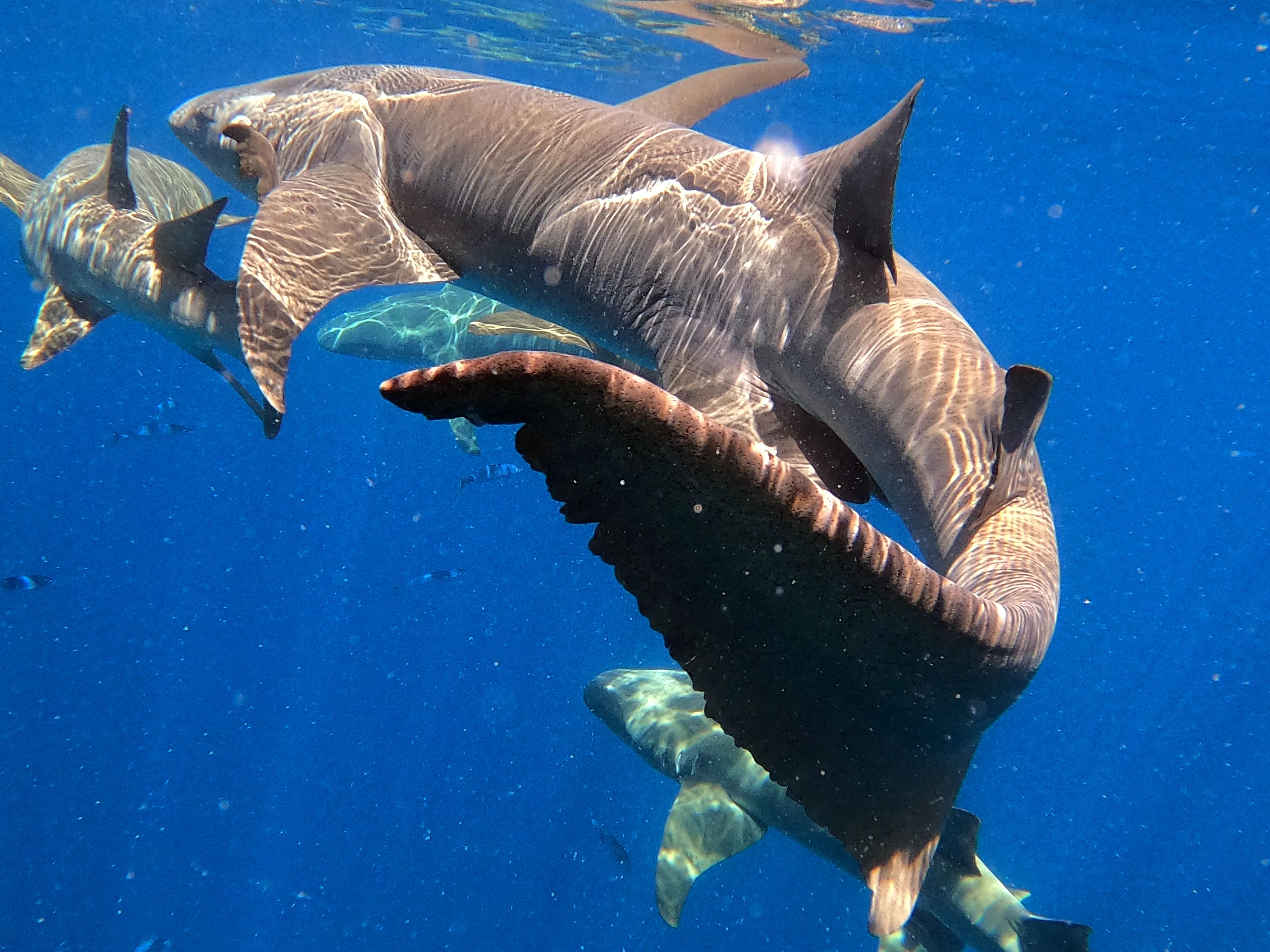Taking our oceans off the boil
September 11, 2023

Areas of ocean with defined conservation aims and some limits on human activity offer one of the best options to give space to heal.
In recent months, much of the world has suffered under scorching heatwaves – searing temperatures that aren’t just felt on land; they are having a profound effect on the 70 percent of our Earth’s surface that remains hidden for many: our oceans. This includes record-low sea ice and mass coral bleaching, both of which are impacting our delicate marine ecosystems.
What’s at stake? Marine heatwaves, characterized by extended periods of anomalously warm sea surface temperatures are off the charts, and the results have been immediate. Fish, which mirror the temperature of the water, are re-locating toward the colder climes in the poles in a bid to stay cool. The world’s largest single-species fishery, the Peruvian anchovy fishery, closed in June due to the effects of El Niño, which brings warmer surface waters to the eastern Pacific Ocean. As climate change heats waters around countries such as Aotearoa/New Zealand, food-gathering practices of Māori tribes, which have sustained communities for generations, are now threatened by the shrinking availability of cockles and mussels.
The degradation of highly productive ecosystems like coral reefs is due to a range of factors, including ocean heating coupled with decades of overfishing, and it threatens to push the oceans to the point of no return, unable to deliver the services on which humanity depends. As a vital climate regulator, how can we make oceans more resilient to climate change while also building the resilience of the communities that rely on it?
Without a literal “sea-change” in how we care for the oceans, we are risking the irreversible loss of marine life as well as life-changing effects for half the world that depends on fish for food and livelihoods. If more world leaders – convening at the UN General Assembly in New York – don't commit to work with nature, the cost of inaction, measured in lives, livelihoods and dollars will be staggering.
Here are three ways that we, as a global community, can lead this change:
First, marine protected areas – areas of ocean with defined conservation aims and some limits on human activity – offer one of the best options to give space to heal. The Mesoamerican Reef region within the Caribbean Sea have been found to improve the health of reefs and fisheries while positively impacting the well-being of coastal communities. With only about eight percent of the ocean under some level of protection, countries must think expansively and cooperatively to conserve, manage and restore the ocean that sustains us.
Second, as many small-scale fishers struggle with diminished catches in the wake of a changing climate, extending the use of science-based catch limits is vital to allow fish populations to rebound and habitats to recover. Such management measures can also improve the livelihoods and well-being of coastal and Indigenous communities. In Papua, in Indonesia, 100 percent of local fishers surveyed reported that fish were bigger after reinstating the traditional practice of sasi, similar to a seasonal or area closure. After decades of overfishing, through inclusive reform efforts, the West and Central Pacific tuna fishery is now one of the world’s most effectively managed large-scale fisheries while doubling the total value of Pacific islands’ tuna exports to nearly US$1 billion.
Third, WWF and the United Nations are working in partnership with communities around the world to help ensure that their aspirations and knowledge are guiding efforts to restore the delicate relationship between people and planet. Yet we need stronger policy frameworks to ensure that all communities, including those who are disadvantaged or who have been historically excluded, have the tools and finance they need to replicate and expand what’s working.
In the past year the world has come to significant agreements to protect the health of the oceans – such as the High Seas Treaty and the Global Biodiversity Framework. But while we have made progress with global treaties and frameworks, it is not enough. It must translate into more urgent action and greater impact now. The World Trade Organization reached an agreement in June 2022 to curb harmful fisheries subsidies, for example, but it is yet to be ratified by enough countries to enter into force. A brand-new, dedicated financing mechanism for worldwide nature conservation, the Global Biodiversity Framework Fund has the potential, once operational, to set off a new chain reaction of positive action on ecosystems and biodiversity, with as much as 20 percent of its resources supporting Indigenous-led initiatives.
Global leaders must recognize that the health of our ocean is intrinsically linked to the health and well-being of humanity and to the Global Goals, our shared plan for a greener, more sustainable world. At the high-level nature event in New York, they have an opportunity to deliver on their commitments and announce new finance and initiatives to safeguard our oceans and the communities that depend on them, including contributions toward the landmark global target to protect and conserve 30 percent of the ocean by 2030.
Record-breaking ocean temperatures should be a wake-up call, demonstrating that humanity has spent far too long trying to bend nature to our will. But nature is resilient – with our help, it can bounce back. We have great hope in what can be achieved if we act now. We must work alongside nature – our greatest ally – to help take our oceans off the boil.
This op-ed was orginally published here.

 Locations
Locations
